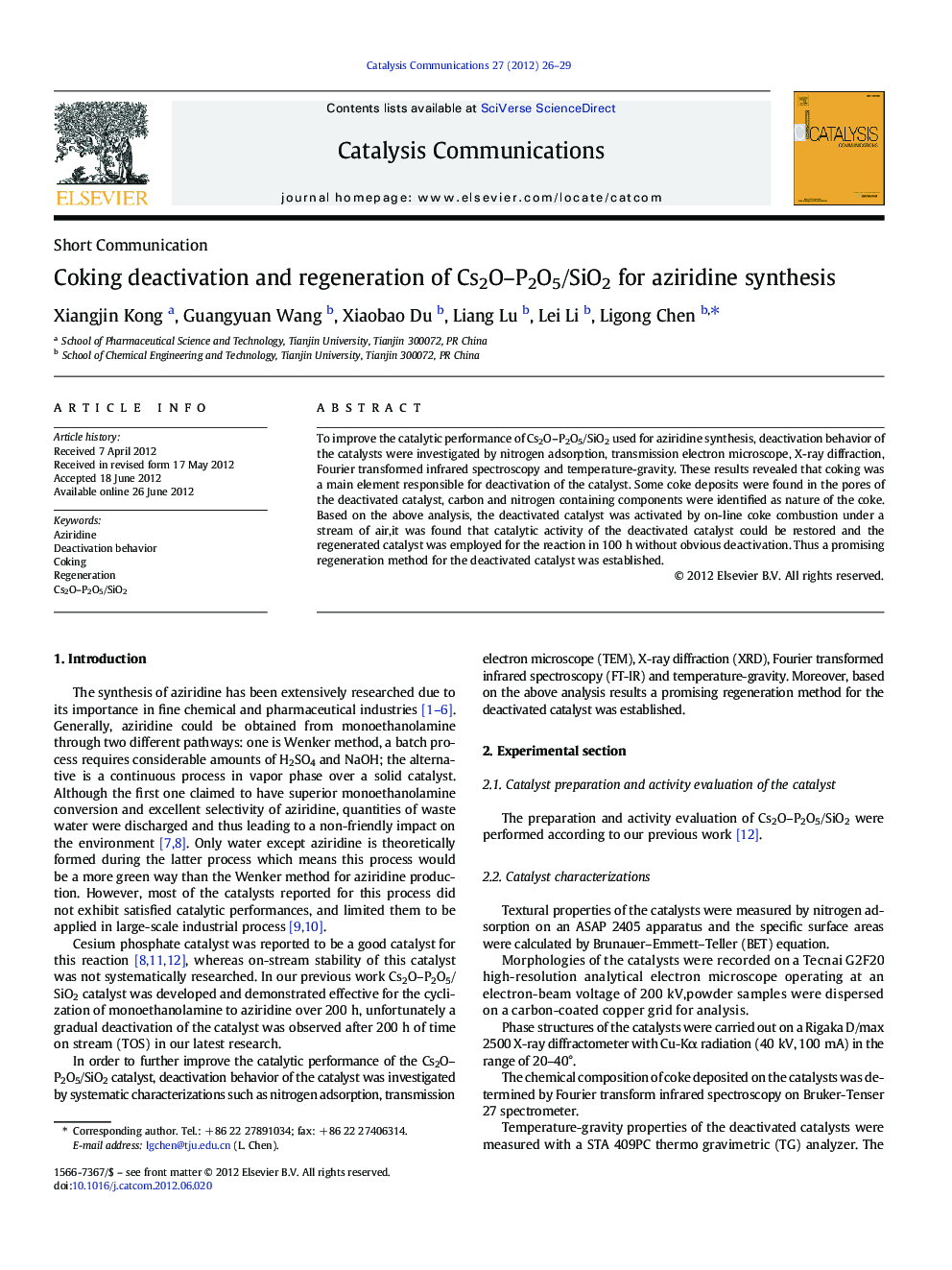| Article ID | Journal | Published Year | Pages | File Type |
|---|---|---|---|---|
| 49962 | Catalysis Communications | 2012 | 4 Pages |
To improve the catalytic performance of Cs2O–P2O5/SiO2 used for aziridine synthesis, deactivation behavior of the catalysts were investigated by nitrogen adsorption, transmission electron microscope, X-ray diffraction, Fourier transformed infrared spectroscopy and temperature-gravity. These results revealed that coking was a main element responsible for deactivation of the catalyst. Some coke deposits were found in the pores of the deactivated catalyst, carbon and nitrogen containing components were identified as nature of the coke. Based on the above analysis, the deactivated catalyst was activated by on-line coke combustion under a stream of air,it was found that catalytic activity of the deactivated catalyst could be restored and the regenerated catalyst was employed for the reaction in 100 h without obvious deactivation. Thus a promising regeneration method for the deactivated catalyst was established.
Graphical abstractFigure optionsDownload full-size imageDownload as PowerPoint slideHighlights► Deactivation of Cs2O–P2O5/SiO2 used for aziridine synthesis was caused by coking ► Carbon and nitrogen containing components were identified as nature of the cokes ► Catalytic activity of deactivated catalyst could be restored by on-line activation ► The regenerated catalyst was performed for 100 h without obvious deactivation. ► A feasible on-line catalyst regeneration method is established
